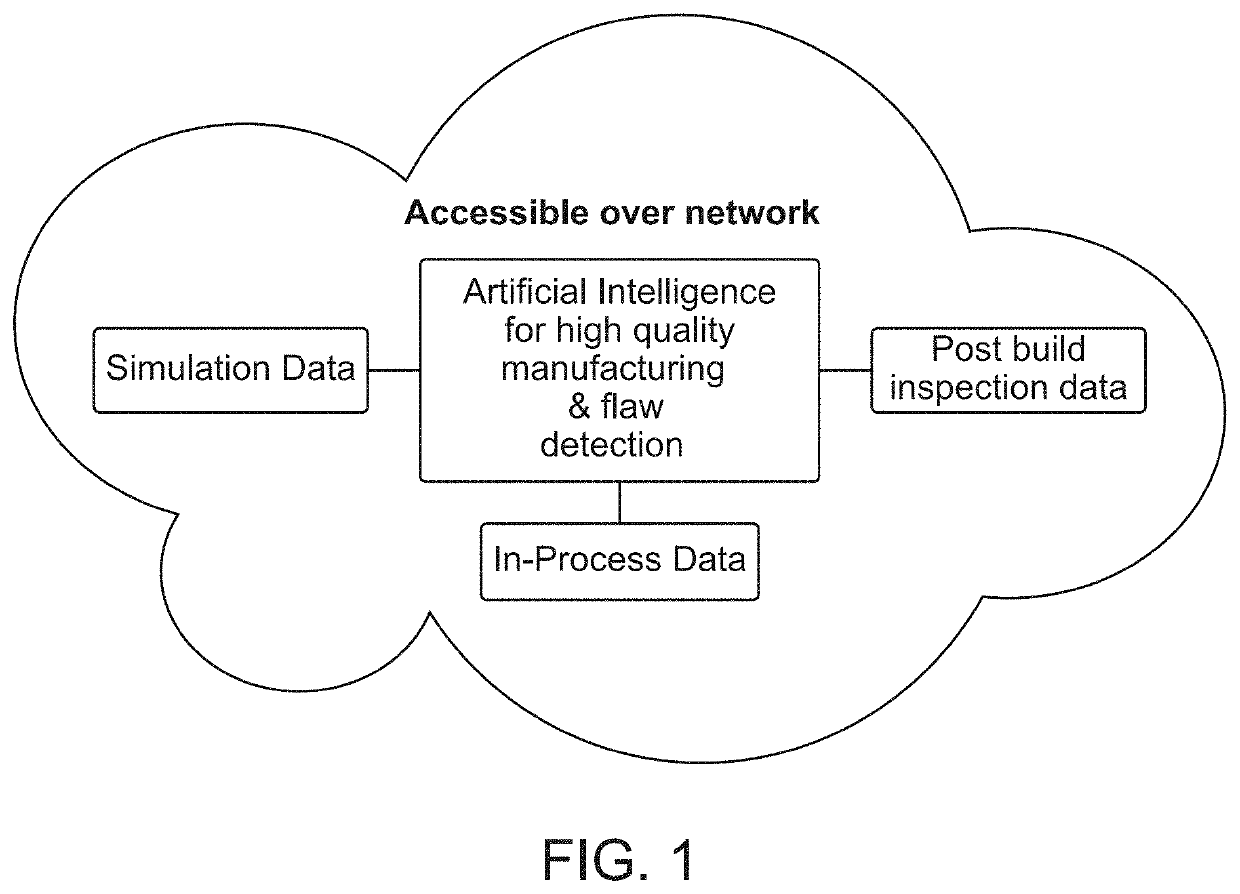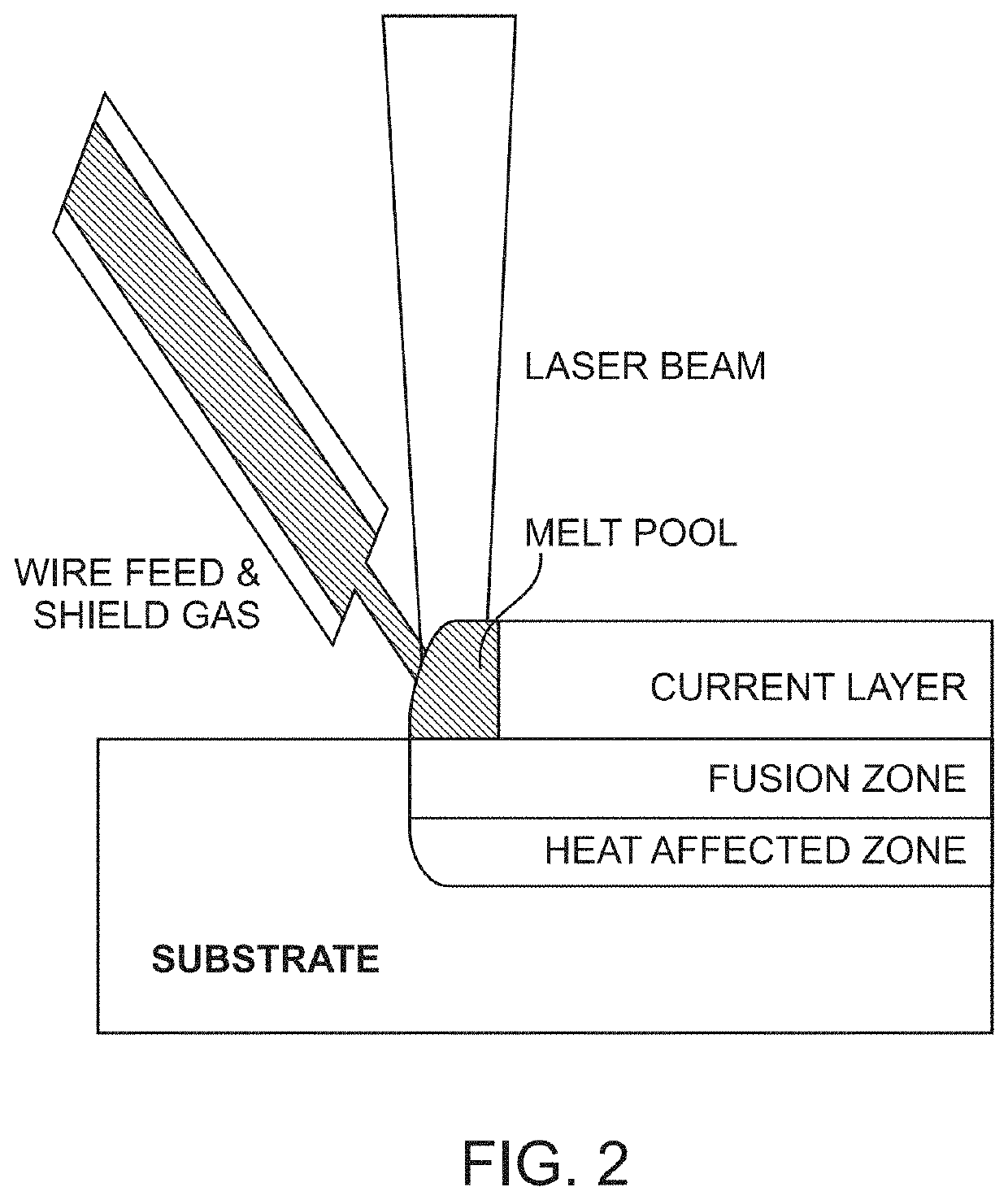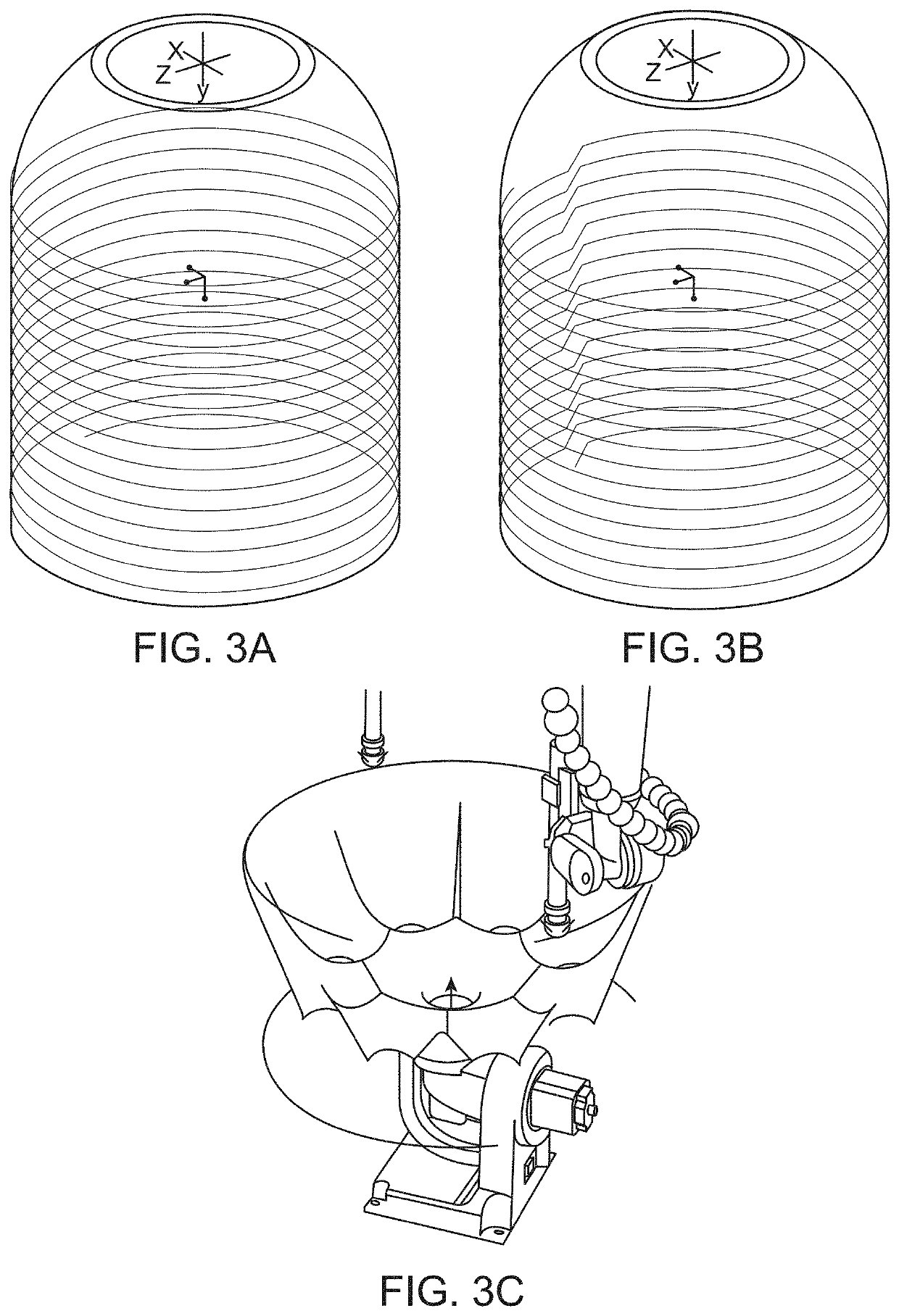Real-time adaptive control of manufacturing processes using machine learning
a real-time adaptive control and manufacturing technology, applied in machine learning, total factory control, programme control, etc., can solve the problems of time-consuming and costly changes to the process control system, and achieve the effects of improving the quality of parts, reducing the cost of implementation, and improving the performance of individual manufacturing process steps
- Summary
- Abstract
- Description
- Claims
- Application Information
AI Technical Summary
Benefits of technology
Problems solved by technology
Method used
Image
Examples
examples
[0273]These examples are provided for illustrative purposes only and not intended to limit the scope of the claims provided herein.
Prophetic Example 1—Automated Object Defect Classification
[0274]The machine learning algorithm-based automated object defect classification methods and systems disclosed herein provide a key component for enabling adaptive, real-time additive manufacturing (or welding) process control. The methods comprise the use of a machine learning algorithm to analyze in-process or post-build inspection data for the purpose of identifying object defects and classifying them according to a specified set of fabrication quality criteria, and in some embodiments, further provide input data for real-time adaptive process control.
[0275]FIG. 15 provides a schematic illustration of the expected outcome for an unsupervised machine learning process for classification of object defects. One or more automated inspection tools, e.g., machine vision systems coupled with automated...
example 3
ess Image Feature Extraction and Correlation with Build-Time Actions
[0278]FIGS. 16A-C provide an example of in-process and post-process image feature extraction and correlation of part features with build-time actions. FIG. 16A: image of the part after the build process has been completed. FIG. 16B: example of post-build inspection output (in this case, a computerized tomography (CT) scan of the part). FIG. 16C: image obtained using a feature extraction algorithm to process the CT scan shown in FIG. 16B. In some embodiments, automated feature extraction allows one to correlate part features with build-time actions. During the build (e.g., when printing), in addition to building a machine learning model that correlates process control parameters (e.g., laser power, feed rate, travel speed, etc.) and result of the deposition process (e.g., the shape of melt pool, defects in the melt pool, etc.), one may also create a mapping between the process control parameters and a specific locati...
example 4
Illustration of how the Use of a Machine Learning Approach Offers Improvements in Quality and / or Outcome as Compared to Conventional Fabrication Processes
[0279]FIGS. 17-20 provide non-limiting examples how the machine learning approach offers improvements over conventional fabrication processes. By way of example, in conventional fabrication processes in connection with sheet metal bending machines, the bent metal can spring back to an undesired shape. However, as provided in FIG. 17, the machine learning approach described in the claimed methods and systems predicts and accounts for this spring back such that the bent metal springs to the desired shape. In some embodiments, the claimed methods and systems achieves this result by adjusting process parameters such as bend force, tool shape, bend speed, bend temperature, and / or bend pressure, or any combination thereof. Force, die shape, pad shape being modified to obtain desired shape after springback. Force measured dynamically duri...
PUM
 Login to View More
Login to View More Abstract
Description
Claims
Application Information
 Login to View More
Login to View More - R&D
- Intellectual Property
- Life Sciences
- Materials
- Tech Scout
- Unparalleled Data Quality
- Higher Quality Content
- 60% Fewer Hallucinations
Browse by: Latest US Patents, China's latest patents, Technical Efficacy Thesaurus, Application Domain, Technology Topic, Popular Technical Reports.
© 2025 PatSnap. All rights reserved.Legal|Privacy policy|Modern Slavery Act Transparency Statement|Sitemap|About US| Contact US: help@patsnap.com



